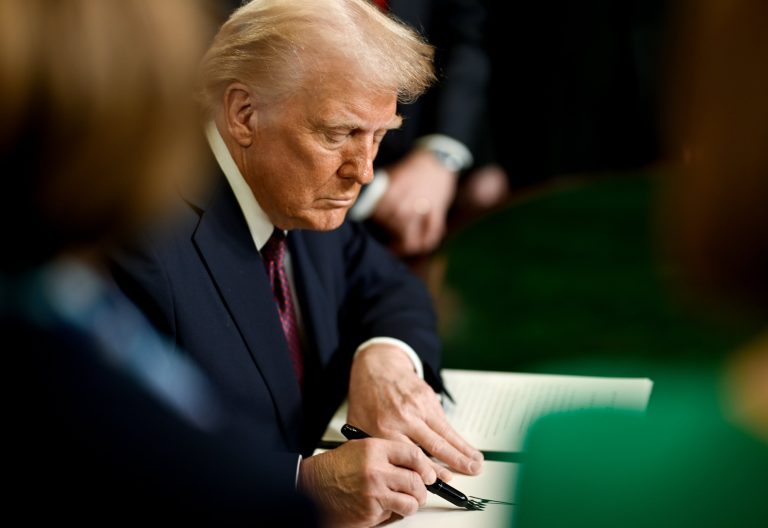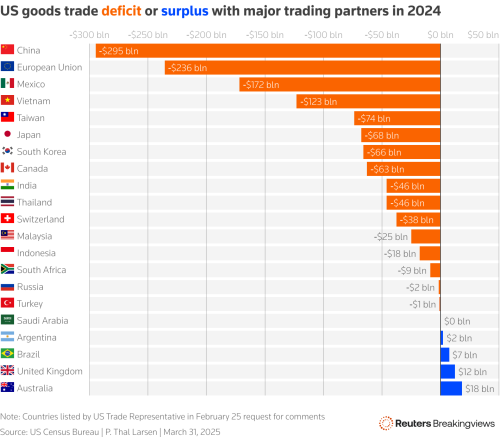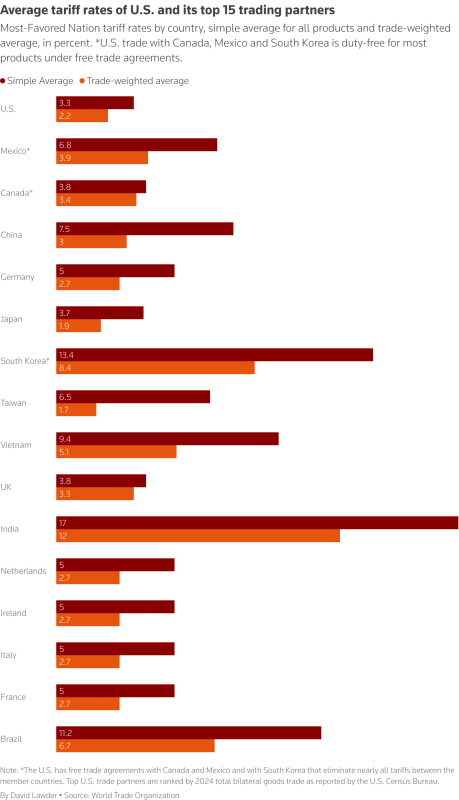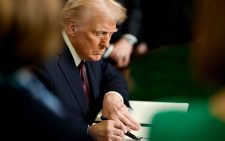Trump to escalate global trade tensions with ‘Liberation Day’ tariffs on trading partners

U.S. President Donald Trump was expected to impose sweeping new reciprocal tariffs on global trading partners on Wednesday, upending decades of rules-based trade, risking cost increases and likely drawing retaliation from all sides.
Details of Trump’s “Liberation Day” tariff plans were still being formulated and closely held ahead of a White House Rose Garden announcement ceremony scheduled for 4 p.m. Eastern Time (2000 GMT).
The new duties are due to take effect immediately after Trump announces them, while a separate 25% global tariff on auto imports will take effect on April 3.
Trump has said his reciprocal tariff plans are a move to equalize generally lower U.S. tariff rates with those charged by other countries and counteract their non-tariff barriers that disadvantage U.S. exports.
But the format of the duties was unclear amid reports that Trump was considering a 20% universal tariff.
“I can’t recall a situation where the stakes were this high and yet the outcome was so unpredictable,” said Steve Sosnick, chief strategist at Interactive Brokers. “The devil is going to be in the details and nobody knows the details.”
A former Trump first-term trade official told Reuters that Trump was more likely to impose comprehensive tariff rates on individual countries at somewhat lower levels.
The former official added that the number of countries facing these duties would likely exceed the approximately 15 countries that Treasury Secretary Scott Bessent had previously said the administration was focused on due to their high trade surpluses with the U.S.
Bessent told Republican House of Representatives lawmakers on Tuesday that the reciprocal tariffs represent a “cap” of the highest U.S. tariff level that countries will face and could go down if they meet the administration’s demands, according to Republican Representative Kevin Hern.

Ryan Majerus, a former Commerce Department official, said that a universal tariff would be easier to implement given a constrained timeline and may generate more revenue, but individual reciprocal tariffs would be more tailored to countries’ unfair trade practices.
“Either way, the impacts of today’s announcement will be significant across a wide range of industries,” said Majerus, a partner at the King and Spalding law firm.
Stacking tariffs
In just over 10 weeks since taking office, the Republican president has imposed new 20% duties on all imports from China over fentanyl and fully restored 25% duties on steel and aluminum, extending these to nearly $150 billion worth of downstream products. A month-long reprieve for most Canadian and Mexican goods from his 25% fentanyl-related tariffs is due to expire on Wednesday.
Administration officials have said that all of Trump’s tariffs, including prior rates, are stacking, so a Mexican-built car previously charged 2.5% to enter the U.S. would be subject to both the fentanyl tariffs and the autos sectoral tariffs, for a 52.5% tariff rate — plus any reciprocal tariff Trump may impose on Mexican goods.

Growing uncertainty over the duties is eroding investor, consumer and business confidence.
Rattled investors have sold stocks aggressively for more than a month, wiping nearly $5 trillion off the value of U.S. stocks since mid-February.
“Ideally, we just get one number and then we can figure out the downstream impact,” said Sonu Varghese, global macro strategist at Carson Group.
“But my fear is that we won’t get that, or even if we get one number that will be subject to negotiations,” he said.
The dollar firmed a touch and other currencies held in tight ranges on Wednesday as traders awaited details of Trump’s plans.
“Markets are going to be jittery ahead of the announcement,” said Carol Kong, a currency strategist at Commonwealth Bank of Australia.
Retaliatory measures
Trading partners from the European Union to Canada and Mexico have vowed to respond with retaliatory tariffs and other countermeasures, even as some have sought to negotiate with the White House.
In Australia, Prime Minister Anthony Albanese and his rival in a May election, Liberal Party leader Peter Dutton, said they would stand up for the country’s national interests in the face of looming U.S. tariffs that could hit Australian beef.
“If I needed to have a fight with Donald Trump or any other world leader to advance our nation’s interests, I’d do it in a heartbeat,” Dutton said in a Sky News Australia interview.
Canadian Prime Minister Mark Carney and Mexican President Claudia Sheinbaum spoke on Tuesday about Canada’s plan to “fight unjustified trade actions” by the U.S., Carney’s office said.
U.S. companies say a “Buy Canadian” movement is already making it harder for their products to reach that country’s shelves.
Trump has argued that American workers and manufacturers have been hurt for decades by free-trade deals that have lowered barriers to global commerce and fueled the growth of a $3 trillion U.S. market for imported goods.
The U.S. president says this has created massively imbalanced trade between the U.S. and the world, with a goods trade deficit that exceeds $1.2 trillion.
A 20% tariff on top of those already imposed would cost the average U.S. household at least $3,400, according to the Yale University Budget Lab.














